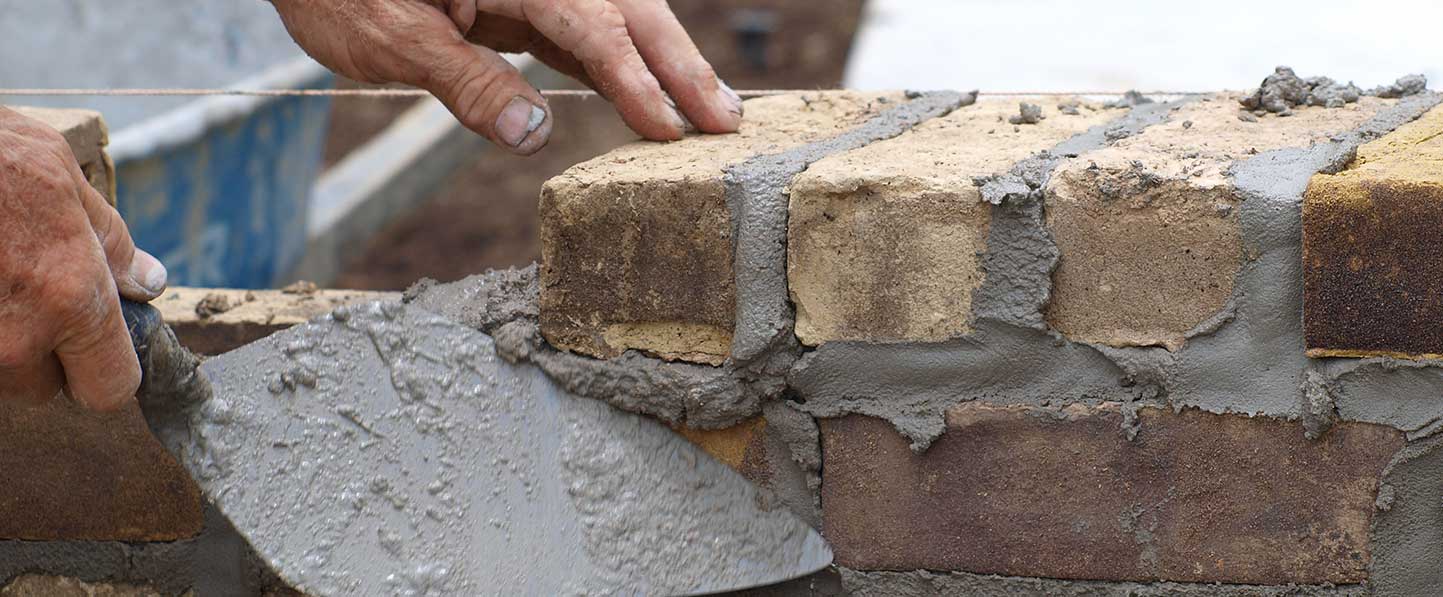Unlocking the Keys of Sustainable Masonry Building And Construction Practices for Eco-Friendly Structures
In the realm of modern construction, the quest of sustainable practices has become extremely important. Among the myriad techniques to environment-friendly building, lasting masonry construction stands out as a reliable and durable technique that holds a wealth of untapped possibility. From the choice of products to ingenious construction methods, the secrets to accomplishing sustainability within stonework building are complex and interesting. By checking out the advantages, materials, methods, and future patterns of sustainable stonework, a deeper understanding of just how these techniques can shape the future of eco-friendly buildings arises.
Benefits of Lasting Masonry Building And Construction
Welcoming lasting masonry construction practices not just minimizes environmental impact yet likewise supplies long-term financial benefits to contractors and areas. By utilizing products like recycled bricks, obstructs, and stones, home builders can considerably lower the carbon impact of their projects while advertising source effectiveness. In addition, sustainable masonry construction methods, such as appropriate insulation and thermal mass homes, can enhance power efficiency within structures, leading to minimized operational expenses over time.
Moreover, the durability and durability of stonework structures add to lasting economic advantages. Structures created utilizing lasting stonework methods usually need much less maintenance and fixing, equating to set you back savings for contractors and residential property proprietors. The durability of masonry materials likewise makes certain that frameworks stay secure and secure, decreasing the demand for regular renovations or replacements.
Eco-Friendly Masonry Materials
Using environmentally friendly stonework materials is a pivotal action towards boosting the sustainability of building methods and minimizing environmental impact while making the most of long-lasting financial benefits. Lasting masonry materials are sourced, generated, and used in a manner that minimizes total environmental influence. Sustainable concrete blocks incorporate recycled accumulations and may include better insulation residential or commercial properties, adding to energy performance in structures.
Additionally, all-natural materials like adobe, rammed earth, and straw bales give exceptional thermal mass homes, minimizing the need for heating and cooling down energy. These materials are usually locally readily available, advertising regional economic situations and reducing transportation-related carbon discharges. By picking eco-friendly masonry products, building projects can substantially reduce their environmental footprint and add to the development of much healthier, more sustainable constructed environments.
Energy-Efficient Masonry Methods
Energy efficiency plays a crucial role in enhancing the sustainability of stonework building and construction practices. One key energy-efficient masonry strategy is the usage of thermal mass, which includes integrating dense materials like concrete or block right into the building's structure to absorb and store warmth.

Developments in Lasting Masonry
Current improvements in lasting stonework practices have actually caused cutting-edge methods that are improving the construction market. One such development is the development of self-healing concrete, which uses microorganisms embedded within the concrete to recover fractures read what he said autonomously. This hop over to here innovation not only minimizes upkeep costs however also improves the sturdiness of masonry frameworks, contributing to their sustainability.
An additional noteworthy innovation is making use of recycled aggregates in masonry building and construction - masonry contractor. By including materials such as smashed ceramic waste or recycled glass right into concrete blends, builders can reduce the environmental effect of building jobs while keeping structural integrity. This method not only draws away waste from land fills yet additionally saves natural resources, making it an essential improvement in lasting masonry construction
Additionally, the combination of digital layout devices, such as Structure Details Modeling (BIM), is changing the way stonework frameworks are prepared and built. BIM permits even more exact computations, minimized material wastage, and enhanced energy efficiency, eventually bring about more lasting structure methods. These innovations collectively represent a promising future for sustainable masonry construction in the age of environmentally friendly structures.
Future Trends in Stonework Sustainability
With the innovative article strides made in sustainable stonework techniques, the future fads in masonry sustainability are positioned to additional transform the building and construction industry. One of the vital fads forming the future of stonework sustainability is the enhanced combination of innovation. Improvements such as Structure Information Modeling (BIM) and digital truth simulations are being utilized to maximize stonework building and construction processes, resulting in minimized product waste and improved power efficiency in structures.
In addition, the advancement of unique sustainable materials is set to play a substantial function in enhancing the eco-friendliness of stonework building and construction. masonry contractor. Technologies like self-healing concrete, recycled aggregates, and bio-based binders are obtaining traction for their ability to minimize ecological impact while preserving architectural stability

Conclusion
Finally, lasting stonework building and construction techniques supply numerous benefits for green structures. By making use of eco-friendly products and energy-efficient methods, masonry can add to a more sustainable constructed setting. Innovations in lasting stonework are continually being developed to further enhance the ecological performance of structures. Looking towards the future, the trend of masonry sustainability is anticipated to expand, resulting in more environmentally pleasant and energy-efficient building and construction practices in the years to find.